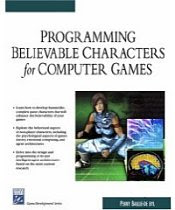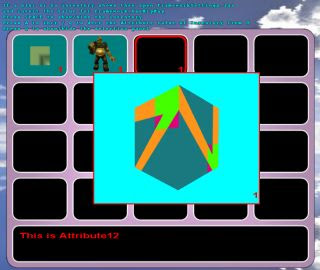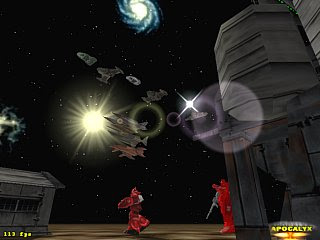Finally, it's time to describe the MekaWars battles. You already know something about MakaWars spaceships, fighters, bombers and exoskeletons. Now I list the basic weapons available and show here the usual little radar-screen of a fight.

As you can see, there are asteroids (yellow dots), resources (orange and cyan), harversters (two green dots) and fighters (two red dots). The fighters are firing with their cannons.
These are the weapons:
These are the weapons:
- Cannons shot projectiles (bombs) that explode after a specified amount of time or when they hit an obstacle; the inflicted damage depends on the target distance from the center of the explosion; bombs are invisible to the radar; the vehicle can't shot bombs when the shield is active; there is no limit to the number of bombs, but they require a certain amount of energy
- Missile launchers launch missiles, of course, that follow automatically a given target; they explode when a certain distance of activation is reached, a timeout has expired, or an obstacle is hit; again the inflicted damage depends on the target distance from the center of the explosion; missile are invisible to the radar, but the sonar can detect them (it detects only the distance of the missile, not its precise position); missiles are confused by the launch of false targets; there is a limited number of missiles for each vehicle
- Torpedo tubes launch torpedos, of course; they are similar to bombs, but possess an activation distance and a trigger time, so they may act also as mines if dropped in place; again the inflicted damage depends on the target distance from the center of the explosion, thus short activation distances are better; torpedos, like bombs, are invisible to the radar and to the sonar; the number of torpedos for each vehicle is limited
These are the weapons actually implemented in the MekaWars simulator. Let me know if you need more!











































